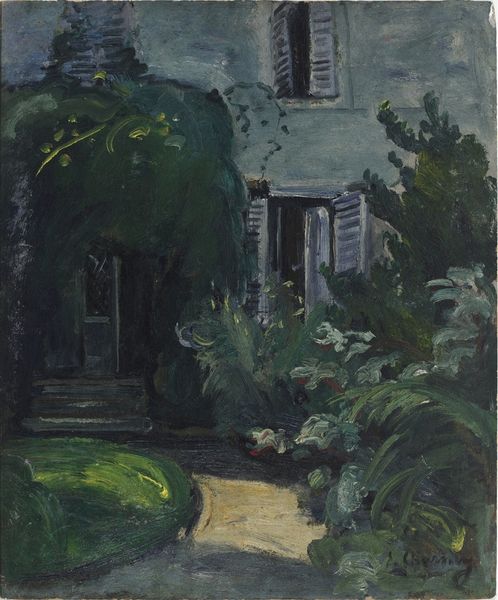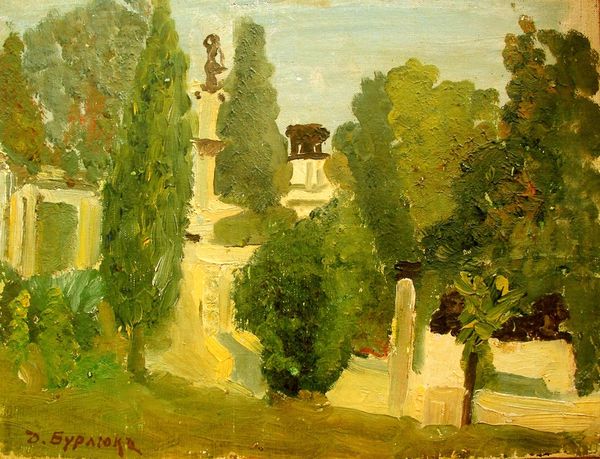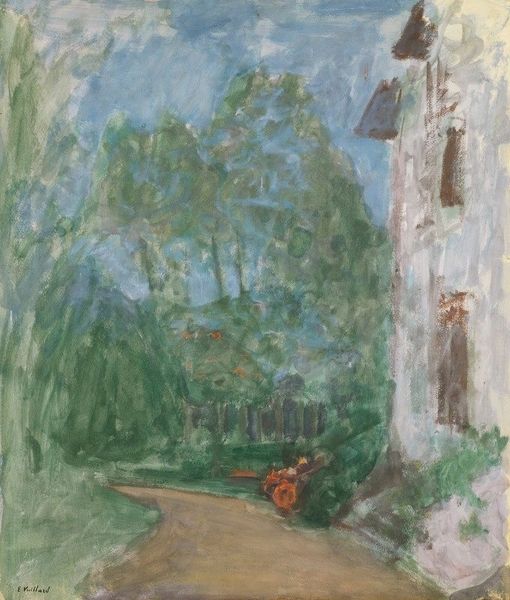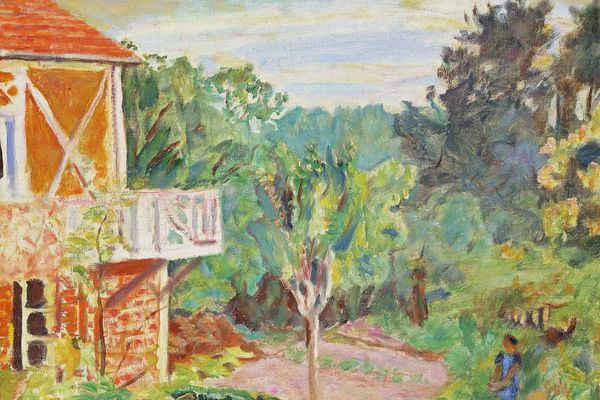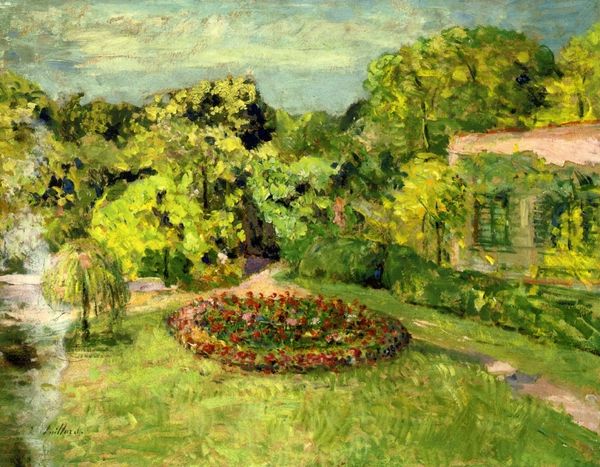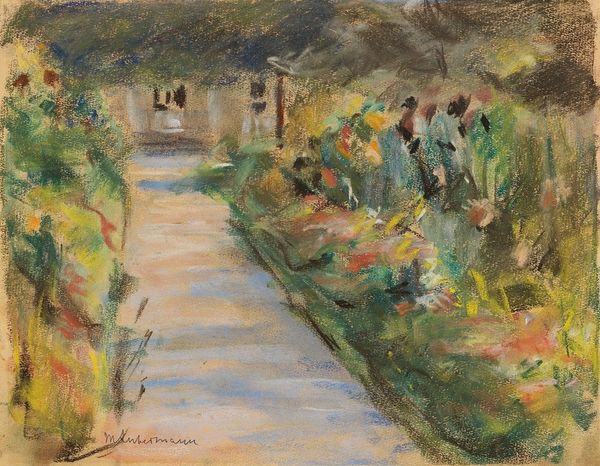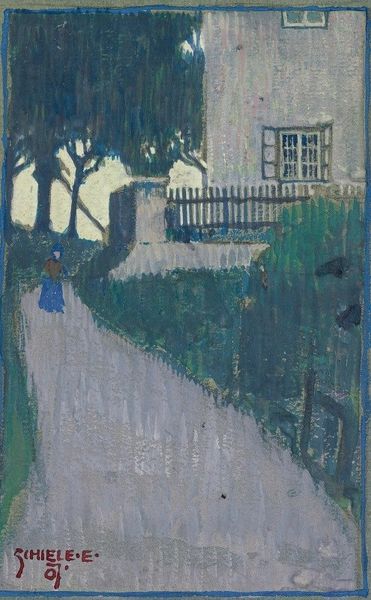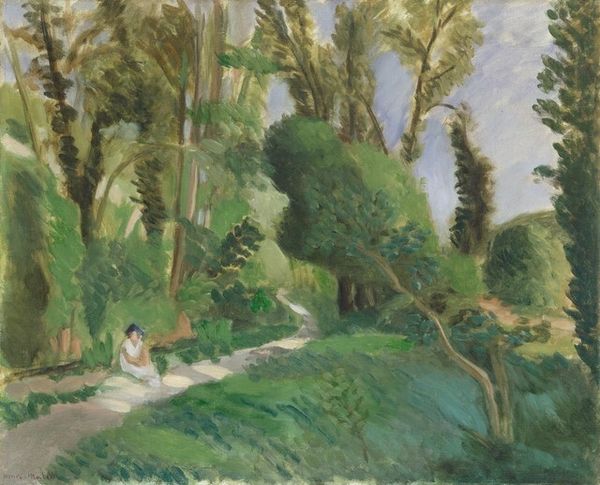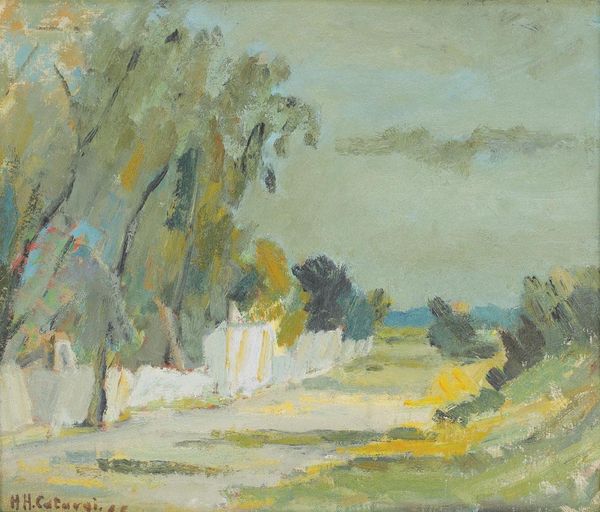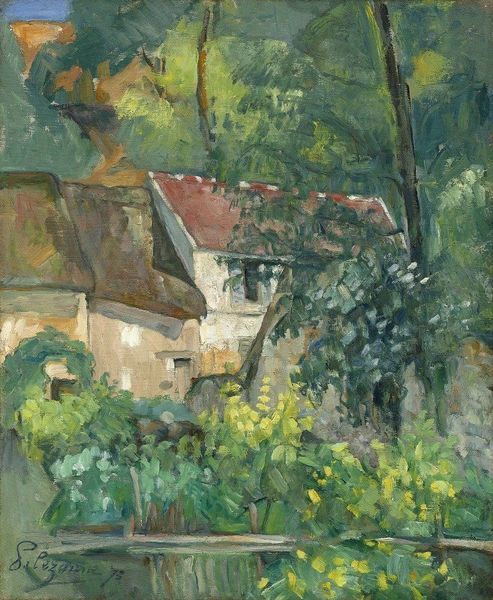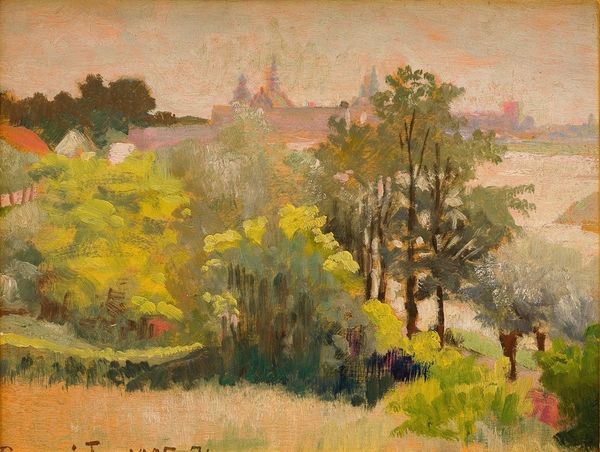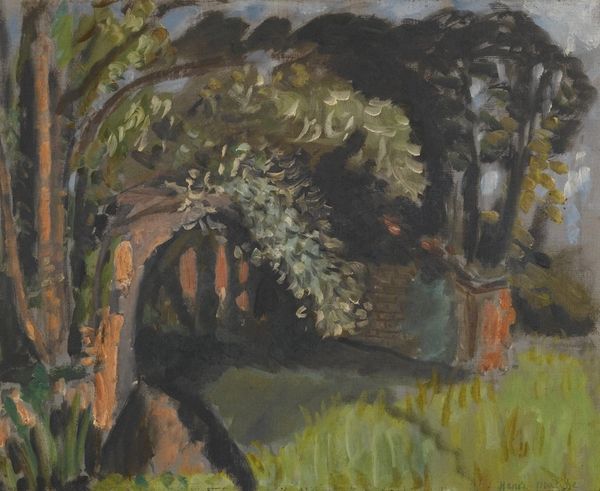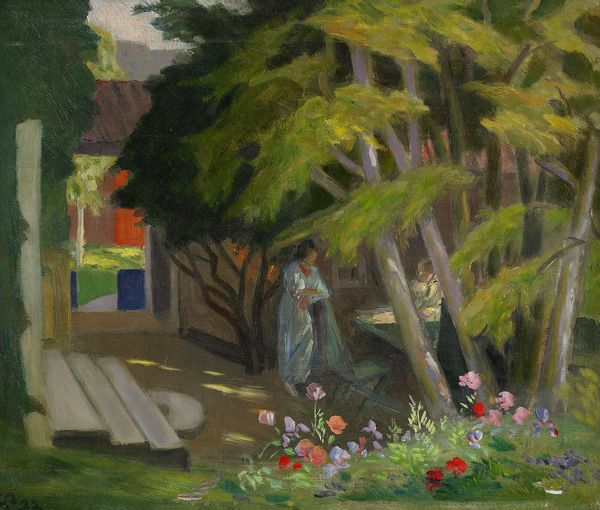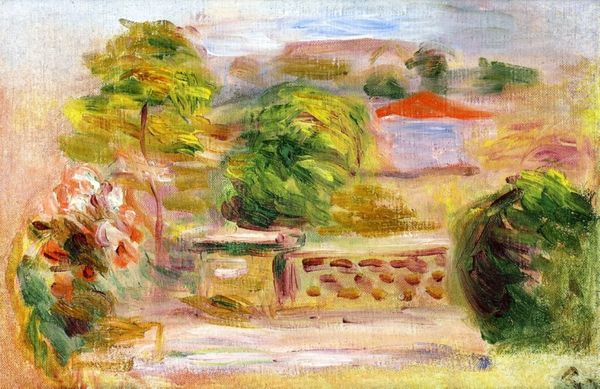
plein-air, oil-paint
#
garden
#
impressionism
#
plein-air
#
oil-paint
#
landscape
#
impressionist landscape
#
oil painting
Copyright: Public Domain: Artvee
Editor: So, this is "A Mediterranean Garden" by Tina Blau. It seems to be an oil painting, perhaps done *en plein air*, giving it a really immediate, vibrant feel. I'm curious – what aspects of its creation and context do you find most compelling? Curator: The immediate appeal comes from its materiality. Notice how the thick impasto captures the light, almost mirroring the act of sunlight hitting foliage. Think about the labour involved. "Plein air" wasn't simply about aesthetic choice, it involved the material challenges of transporting equipment, mixing paints on the spot, battling the elements. It democratized artmaking, making it accessible outside a formal studio. Editor: That makes a lot of sense! It really does seem like Blau was emphasizing the physicality of the garden through her brushstrokes and technique. Were there specific social or economic factors driving women artists to adopt the "en plein air" style? Curator: Absolutely. For women, working *en plein air* offered a degree of freedom from the heavily male-dominated academic art world. However, think about access. Who had the time and resources for leisure, for painting outdoors? Consider Blau’s own privileged background; how does her social positioning influence her subject matter and artistic practice? The paintings romanticize the everyday labor behind these gardens. What do you think? Editor: It's true; even this seemingly idyllic garden scene required resources. Now, looking at it as labor instead of as nature, changes how I feel about this artwork! Curator: Exactly! By examining the means of production – the materials, the labor, even the social standing – we understand a painting as more than just a pretty picture, we learn about art within social, political, and historical contexts. Editor: I see the garden, and so much more now. Thank you!
Comments
No comments
Be the first to comment and join the conversation on the ultimate creative platform.
